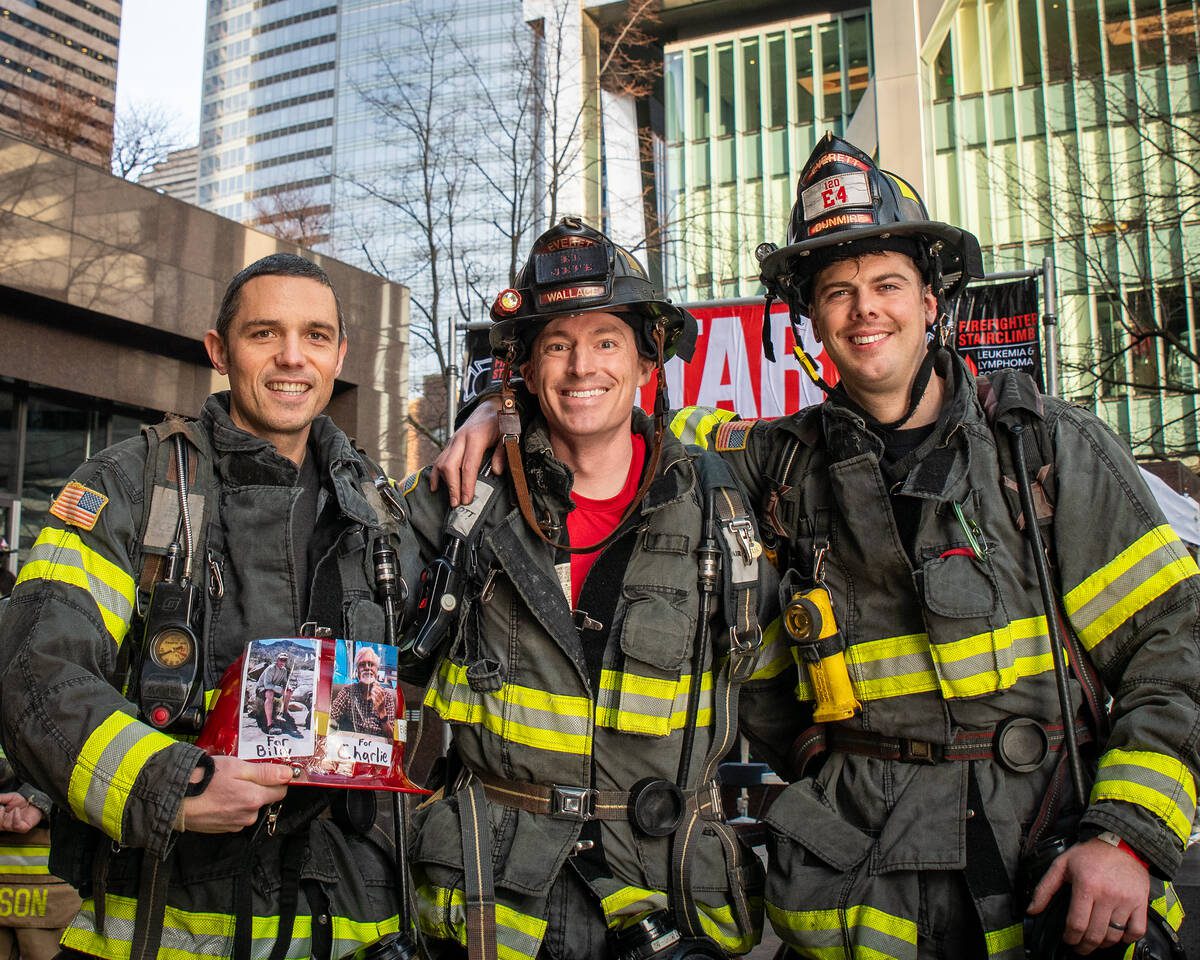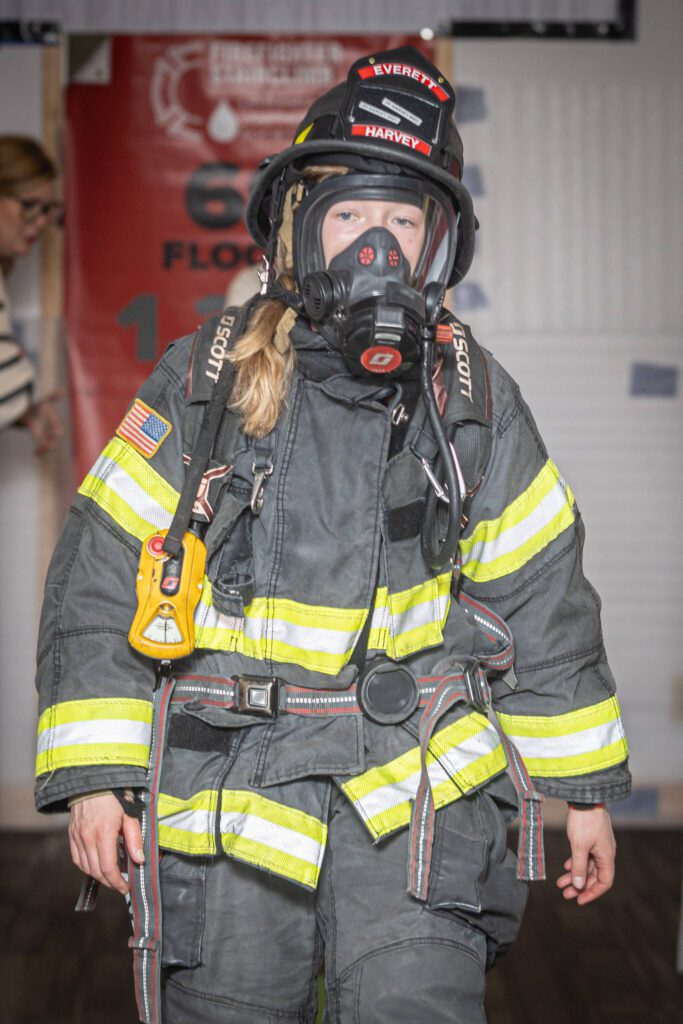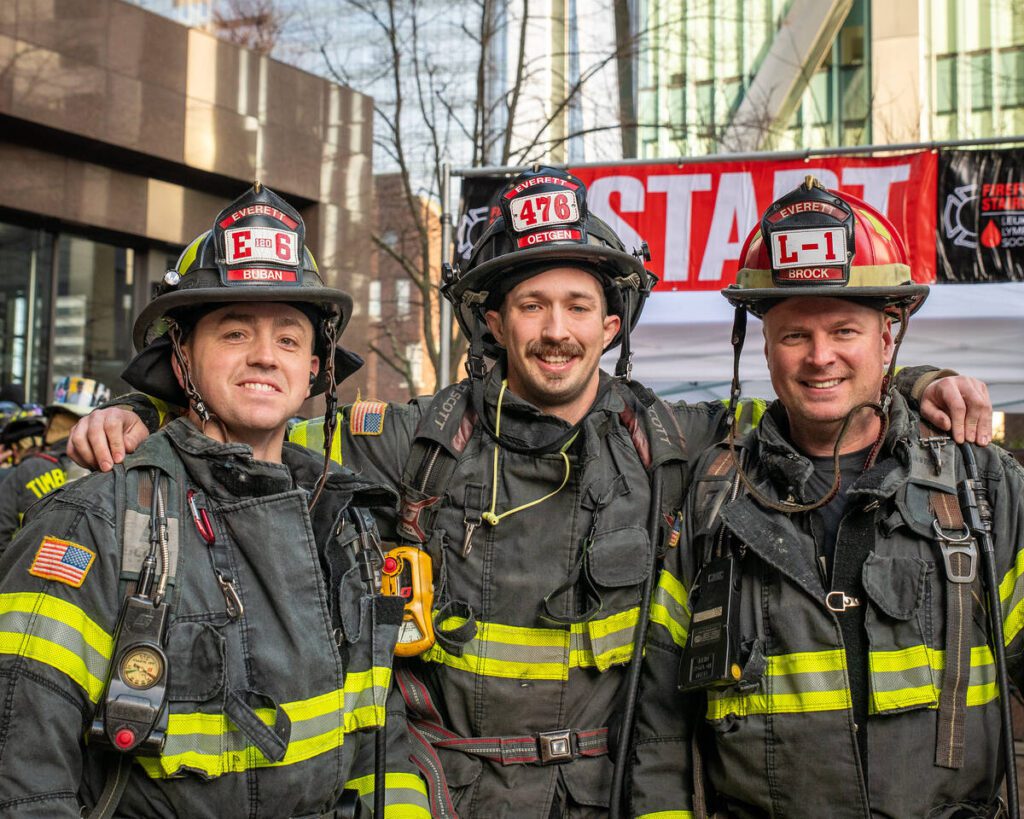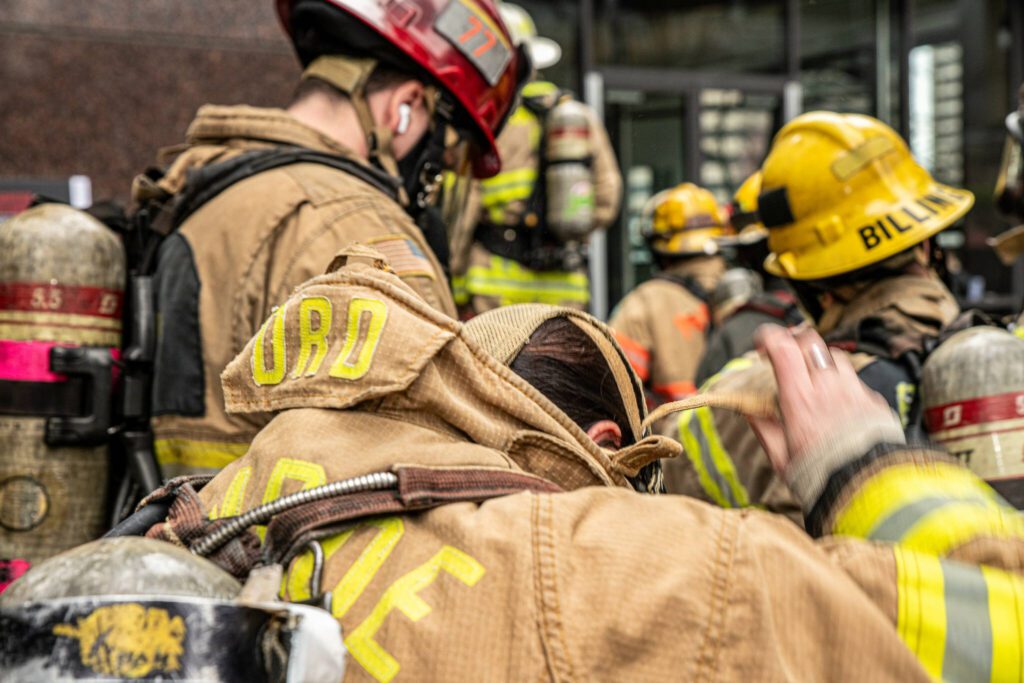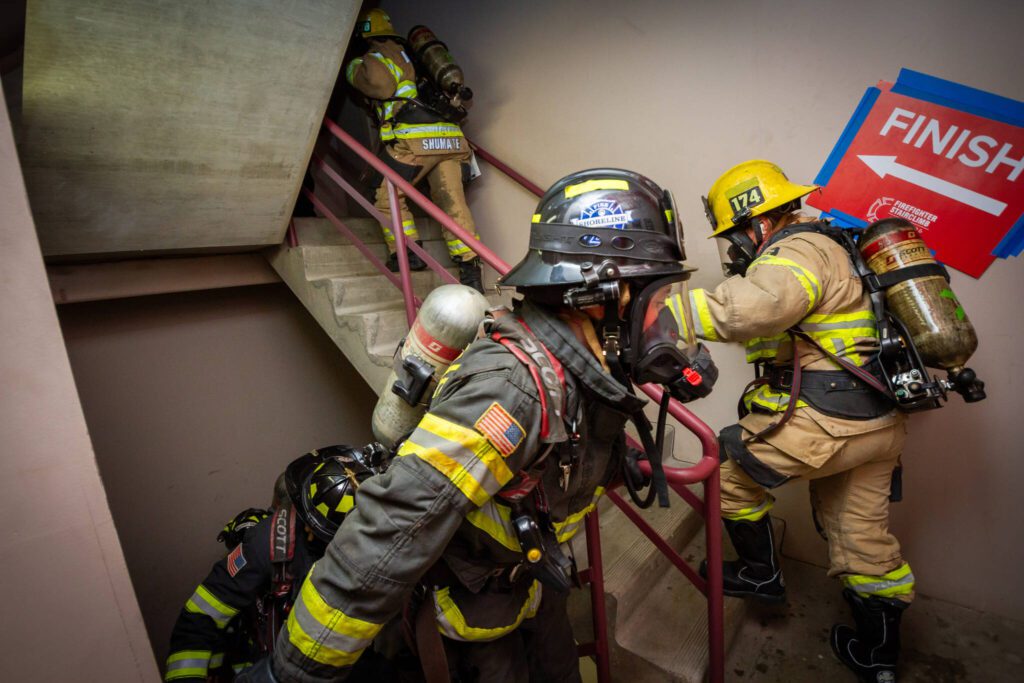SEATTLE — You might see them outside local sporting events or retail stores, standing next to century-old, gleaming fire trucks, looking for donations toward a cancer cure.
You hope they never have to come to your home while they’re on the job.
In addition to regularly saving lives threatened by emergencies, the Everett Fire Department also plays a role in the battle against blood cancers.
The Leukemia & Lymphoma Society recognized Everett Fire on June 8 as the top fundraising team for the 2025 Firefighter Stairclimb. Once per year, with most participating in full firefighter gear, approximately 50 Everett firefighters climb 1,311 steps up the staircase of Seattle’s Columbia Center, the tallest building in the Pacific Northwest. Everett routinely tops the list of fire departments, which have come from over 30 states and multiple countries.
Everett FD raised $81,832 this year thanks to donations from people who walk up to them at public events, social media posts and the support of family and friends. Since the Firefighter Stairclimb’s inception in 1991, Everett has raised $955,749, which puts it in position to hit the $1 million career fundraising mark for LLS, a non-profit organization “focused on accelerating research, providing free support and services, and advocating for policies to ensure access to quality, affordable care.” Over the past 34 years, the event has raised $26 million.
“(Everett’s) got a huge, longstanding legacy,” said Katie Bolton, executive director of the Leukemia & Lymphoma Society’s Pacific Northwest region. “They’re deeply passionate about the work that we do and relentlessly committed to continuing to drive more impact for the mission and for patients.”
The event raised over $2.3 million this year. Coupled with a Big Climb for non-firefighters held two weeks later, stair climbers brought in over $3 million in the two 2025 events. Andy Denzel led Everett with $8,006 raised. Brent Molsberry had the department’s fastest time in the open division (no gear), climbing the 69-floor event in 11 minutes, 59.9 seconds. Zachary Greenberg was Everett’s best in the fire division (full gear), finishing in 16:28.6. Colton Porter (11:03.5) and Brett Andersen (11:28.2) of Burnaby Fire dominated as the only two wearing the 50-plus pounds of gear to get to the top in under 12 minutes.
While climbing the Columbia Tower isn’t the most dangerous activity for a firefighter, it also is no picnic. The turnout gear they wear is meant to keep heat out, but it also keeps body heat in.
“The hardest part of the whole thing, the crux of it, is the heat,” said Everett team captain Mike Dunmire, who this year took the reins from long-time captain and soon-to-be-retired Brad Schmidt. “That gear insulates well — protects you from heat — but it also doesn’t let any heat out either. And once you start overheating, there’s just no turning back.”
That quickly becomes a factor in the stuffy stairwell as the heart rates climb and breathing becomes heavy. Firefighters wear self-contained breathing apparatus (SCBA) masks connected to oxygen bottles. About halfway up the tower, most firefighters swap out the bottle or the full breathing apparatus so they don’t run out of air. Similar to a pit crew, volunteers rush to change it out so the firefighters can limit downtime with the clock ticking.
“Endurance helps you a lot with breathing down your bottle slower,” Dunmire said. “If you’re in a house fire, you want to utilize your air as efficiently as you can. And then the short bursts of energy — sometimes you have to help pull somebody out of a window and carry them down a ladder. It’s a lot of exertion in a short period of time.”
Though firefighters possess athletic and competitive traits by nature, Dunmire said there’s a mix of types who climb. They range from rookies to fire chiefs. There are fitness fanatics Dunmire lovingly referred to as “huge meatheads” and those who might have gone a few years past the best shape of their lives. Everett firehouses all have stair machines. While they’re in use year-round before and after shifts, they tend to be more in demand as the annual March event approaches.
“We have some really fast people who are competitive, who get competitive times,” Dunsmire said. “But collectively, the entire department is so supportive about fundraising. That is our main focus for the whole event. It’s a point of pride for the department, getting out in the community, waving signs.”
For firefighters, the event aids what they feel is a great cause while also helping them maintain the physical fitness required to save lives.
According to a National Institute of Standards and Technology study, the turnout gear that helps keep firefighters safe from fire and smoke also makes them more susceptible to blood cancer due to the polyfluoroalkyl substances (PFAs) contained in the textiles.
“This is a unique community that is disproportionately impacted by blood cancers,” Bolton said. “Firefighters are heroes every day in the work that they do to save others’ lives, but they also take on the inherent risks that the very thing that protects them protects them from fire and keeps them safe also has cancer-causing chemicals in it.”
Bolton expressed appreciation for the Columbia Center, including the Gaw Capital ownership group and Urban Renaissance Group management, for allowing free use of the stairs, lobby and 73rd floor observation deck spaces for two Sundays per year. She’s also amazed by the firefighters who train for and participate in the strenuous event.
“It’s really remarkable, the level of conditioning, the level of commitment and endurance it takes to put the gear on — if you’re fighting a fire, I can’t even imagine the amount of heroism that takes to go boldly into those spaces. Then to think about training for a climb and doing that in your spare time — it’s exceptional. It’s a testament to the character of the individuals who climb.”
Editor’s note: Aaron Coe, a 12-time Big Climb finisher, is a member of the Leukemia & Lymphoma Society Washington Pacific Northwest Region Big Climb Leadership Committee.
Talk to us
> Give us your news tips.
> Send us a letter to the editor.
> More Herald contact information.
